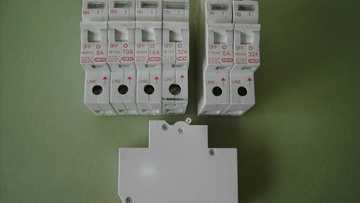Queuing theory: formula, application, limitations
In the modern world, managers have to deal with many different tasks that are related to the queuing systems and rely on the queuing theory. What are the queuing theory formulas you can use in your company? How can this famous theory be applied in hospitals, banks, service systems and your business?

Source: UGC
In this post, we would like to describe what is queuing theory and talk about its application and limitations. We are sure that young Nigerian firms, small and medium businesses can make use of this information and improve their performance.
What Is Queuing Theory
According to wikipedia.org, Danish engineer Agner Krarup Erlang is the father of the queuing theory (you can also see the title queueing theory). This phrase contains the ‘queue’ word, and it means that this concept studies waiting lines of people. It is based on mathematics, operations research, and it promises to help you predict the queue lengths in your business and waiting time of your potential customers or clients.
Queuing theory formulas are meant to improve the service and satisfy the requests of consumers. Their application is possible is different sectors of the economy, production, finance, life and business. Through the methods of this philosophy, experts can solve economic problems, optimise the working space in offices, factories, hospitals, shops, and others spheres. Queuing theory application helps to make the correct business decisions and manage numerous projects.
READ ALSO: Functions of project management tools

Source: UGC
Queuing Theory Formulas
Erlang’s philosophy is a part of the mathematical theory of probability. It uses the famous John Little’s theorem believing that the average number of consumers in a system (L) equals to the fair effective arrival rate (λ) multiplied by the typical time (W) that every client spends in this system.
If we write queuing theory formula in a mathematical way, we will get the following expression:
L = λW
Of course, this is a simplified version that explains the main idea introduced by Erlang and expressed algebraically by Little.
The number of formulas used in the modern world is significant. The companies that are planning to apply this system in their work have to consider many additional factors, such as a number of servers available, capacity of a queue, M/M/1, M/G/1, G/G/1 or other nodes, etc.
Queuing Theory Application
It is possible to apply the Erlang’s ideas and Little’s expression in nearly every sphere of life. It works in hospitals, it works in banks, it works in business, and it improves all possible service systems and even structures within systems.
Companies from all over the world, including Nigeria, are applying the famous theory to figure out a suitable number and types of service facilities that should be used to satisfy different consumers.

Source: UGC
The queuing theory application is conceivable when you need to complete various tasks. For example, when you need to:
- Schedule and plan the details of gathering line in any mass production system (bank, hospital, shop, airport, etc.)
- Figure out a number of machines, workstations, cash boxes, etc. necessary for the effective operations in mass production
- Replace, rearrange and cut the number of equipment or tools in the plant, factory, organisation to meet particular standards and solve economic problems
- Recommend a possible number of clients to be serviced by the company
- Make recommendations about the required human resources for an organisation
- Schedule the take-off and landing in airports that have limited amenities
It is better to apply queuing philosophy and theory of probability when you wish to optimise the organisation and use all the available facilities to the fullest, minimise the waiting time of your clients and resolve their problems. We all know that satisfied customers would always return, which means that your business will win and earn more money.
Queuing Theory Limitations
Even though the ‘queue’ philosophy relies on science to help us understand the number of people to be serviced on a day-to-day basis, there are certain queuing theory limitations we have to keep in mind.
Here are some of the limitations to consider:
- The problem resolving is based on mathematical distributions and assuming (the client’s behaviour is predicted, but no one guarantees the 100 per cent accurateness)
- Situations that take place in real life are usually complex and get beyond the philosophy and mathematics, which means that doubt remains no matter how accurate you are
- Many companies have multi-channel services when one client has to receive services from several operators, and this can mean that customers would often have to fall in a new queue soon after they get out of the previous one
- It takes much effort, time and energy to analyse a particular situation and solve the problem using the theory (this method is expensive)
P.S. You have learned some brief facts about the queuing theory, its formula, application possibilities, and limitations. If used correctly, it can help you solve numerous problems and improve your company’s systems in terms of serving the queue and helps all possible customers to achieve their goals.
READ ALSO: History of marketing in Nigeria
Source: Legit.ng






